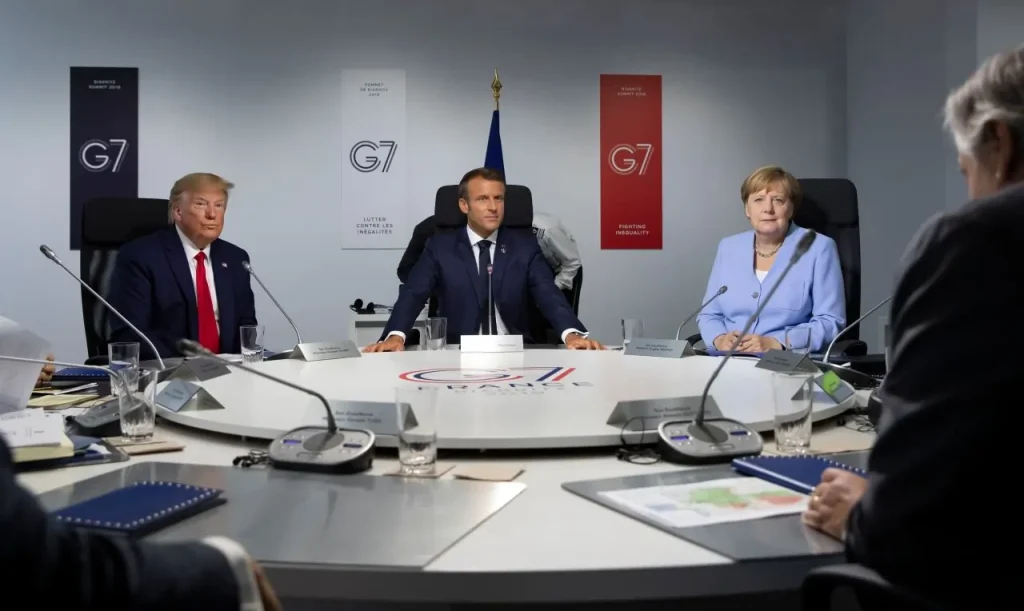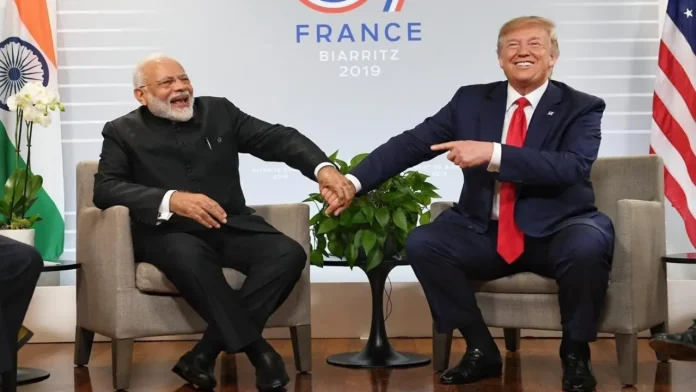Imagine this: mid‑G7 summit, Trump realizes he forgot to meet Modi in person—so he hits redial.
Cue Modi calmly correcting history, clarifying the entire ceasefire drama, and politely declining a U.S. visit—all in a 35‑minute chat. It’s part diplomacy, part mic‑drop moment, with plenty of geopolitical flair.
| Aspect | Detail |
|---|---|
| When & Why | June 18, 2025 – Trump requests a follow-up call after their missed meeting at the G7 summit |
| Duration | Roughly 35 minutes |
| Main Topics | 1. Terrorism and Operation Sindoor2. Ceasefire mechanics3. Third-party mediation4. U.S.–India trade myths5. Future Indo-U.S. cooperation & invitations |
| Key Messages from Modi | • Terrorism = war, not a proxy skirmish• Operation Sindoor still underway• No third‑party mediation in India–Pakistan ceasefire• Ceasefire achieved bilaterally via military channels; Pakistan requested halt• No discussions on U.S.–India trade or mediation |
| Trump’s Input | Extended condolences on Pahalgam attack (26 lives lost); expressed support for India’s anti-terror stance; asked Modi to visit the U.S. on his Canada return |
| Outcome | Modi declined U.S. visit citing schedule; invited Trump to Quadrilateral (“Quad”) summit in India, which Trump accepted |
| Domestic Reaction | Congress demands explanation for 37‑day silence on mediation; BJP counters claims of opacity |
Detailed Breakdown: The 5 Top Talking Points Users Want
1. Terrorism = A Full-Scale War, says Modi
Modi firmly stated to Trump that India henceforth treats terrorism as war, not proxy incidents—underscoring Operation Sindoor, launched April–May in response to the Pahalgam terror attack and cross-border strikes in PoK.

2. Operation Sindoor — Still Rolling
The PM reminded Trump that Operation Sindoor continues, though military action paused at Pakistan’s request—not due to U.S. trade or mediation offers.
3. No Third-Party Mediation—Ever
The centerpiece: Trump’s prior claims that the U.S. brokered the India–Pakistan ceasefire were firmly countered. Modi emphasized bilateral resolution via military channels, stressing India has never—and will not—accept any third-party mediation.
4. No Trade Deal Bargaining at Play
Modi clarified no discussions took place about U.S.–India trade deals in connection to Operation Sindoor or ceasefire. India’s fight against terror isn’t tied to business deals .
5. Futures: The Quad Summit & Global Security
Despite declining Trump’s invite (due to earlier commitments), Modi invited Trump to the upcoming Quad leaders’ summit in India later this year. They also touched upon broader issues—Israel‑Iran, Russia‑Ukraine, Indo-Pacific stability.
Timeline: From Summit to Redial to Resolutions
- June 16–17, 2025: G7 summit in Kananaskis, Canada, where Modi and Trump expected to meet
- Trump departs early, cutting short the G7 interaction .
- June 18: Trump requests phone conversation.
- Call runs 35 minutes, covering all five major themes above
- Public statements issued, clarifying India’s position on ceasefire mechanics, terrorism strategy, and mediation stance.
- Domestic backlash surfaces: Opposition demands white paper; BJP responds
- Invitation for Quad Summit extended and accepted
Why People Care: 6 Hot-Button Search Topics
- “Was there U.S. mediation in India–Pakistan ceasefire?”
User sees Trump taking credit—Modi’s call debunks that with direct quotes - “Operation Sindoor status update”
Still ongoing, paused strategically, not due to foreign bargaining - “Modi Trump phone call transcript / highlights”
Users want “top 5 things”—our 5‑point breakdown handles that - “Did they discuss trade deal?”
Modi: no trade talk attached to Operation Sindoor or ceasefire - “Was Trump invited to Quad summit?”
Yes, Modi invited Trump to Quad in India; Trump accepted - “Why criticism from Congress?”
Opposition upset over 37-day silence before Modi responded publicly; it’s seen as delaying transparency
FAQ Style: Quick Answers
Q: Was the call truly at Trump’s request?
Yes—White House channels confirmed it, following Trump’s early exit from G7 .
Q: Did Modi officially refuse Trump’s U.S. visit?
Q: What is Operation Sindoor?
Strategic & Diplomatic Significance
- India’s Sovereign Stance
Modi reasserted India’s preference for bilateral resolution—no outside intervention needed. - Global Anti-Terror Narrative
By treating terror as a war, Modi aligned with global norms for decisive action. - U.S.–India Relations
Re-affirms strategic ties—shared views on Quad, Indo-Pacific, plus global conflicts. - Internal Political Pressure
Balancing international diplomacy with domestic scrutiny shows governance tensions.
| Question | Modi’s Response / Outcome |
|---|---|
| Was there U.S. mediation in the ceasefire? | No—India rejects any third-party role in India–Pakistan military de-escalation. |
| Is Operation Sindoor over? | No—it continues; pause only at Pakistan’s behest, not due to American intervention. |
| Did the U.S.–India trade deal come up? | No—Modi said this never entered the discussion. |
| Was terrorism treated as war? | Yes—Modi stressed terrorism equates to war, not proxy conflict. |
| Did Trump invite Modi to the U.S.? | Yes—invitation declined due to existing schedule; Modi invited Trump to his Quad summit, which Trump accepted. |
| What are the domestic implications? | Opposition criticizes Modi’s delayed response; BJP counters. |
The Modi–Trump call was more than a diplomatic courtesy—it was a scripted moment in modern diplomacy:
- Modi seized the chance to correct a widely circulated narrative about U.S. mediation.
- He reaffirmed India’s autonomous strategy in counter-terror and bilateral negotiations.
- He steered clear of symbolic gestures or transactions tied to trade deals.
- He planted the seeds for future U.S.–India engagement via the Quad.
It’s a textbook case of managing both the global stage and the internal scoreboard, all while keeping composure in a mid-summit phone chat. Cue the mic drop.

